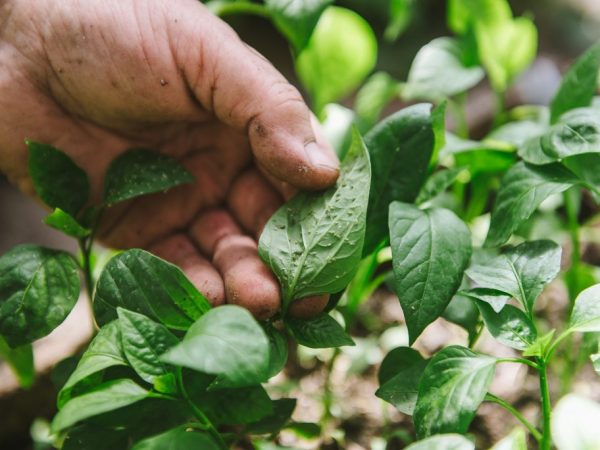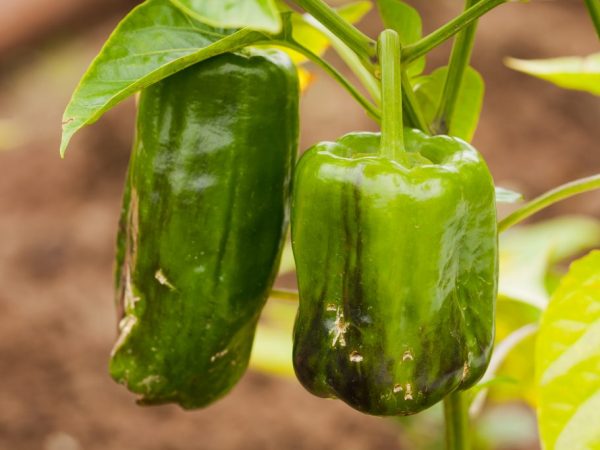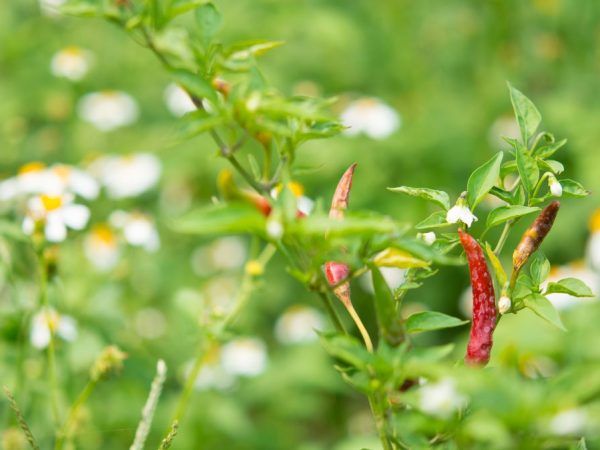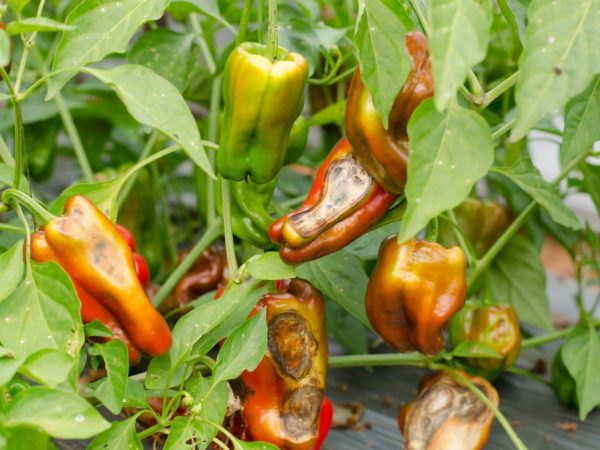Pepper Diseases: Treatment Methods
It is quite difficult to grow bell peppers or pungent peppers. The vegetable loves warmth, a lot of sun and requires adherence to agricultural technology. To get a good harvest and healthy fruits, you need to work hard, because a young vegetable is often threatened by various viruses and infections. The main thing is to start treating pepper diseases in time, since the plant may die.

Diseases of pepper
Causes of the appearance of diseases in a vegetable
Peppers are most vulnerable during cloudy and rainy summers. To begin with, the gardener must determine the cause of the disease in the pepper. Pepper diseases are not only caused by the local climate and weather conditions. Often diseases in pepper appear from improper care and growing conditions of the vegetable.
Various infections, fungi and viruses almost always infect a young plant at the initial stage of cultivation. It should be understood that the treatment does not always have the desired result and, most often, the vegetable culture dies. But, if the gardener sees the presence of the disease in time and knows how to treat it, it may be possible to save the crop.
Diseases of a bacterial nature
If the peppers are grown in a greenhouse, then this environment is ideal for the birth of bacteria. The infection grows faster in a greenhouse than in an open field, therefore it is recommended to fulfill certain conditions and try to prevent disease from a vegetable crop. Timely recognition of the disease will eliminate long-term treatment and save most of the harvest.
Phytoplasmosis
Phytoplasmosis disease appears due to the presence of mycoplasmas on the fruit. The infection spreads quickly if pests such as aphids or ticks are present. The presence of infection stops the growth and development of the fetus.
Treat the disease by spraying with drugs such as Zaslon and Barrier. The funds are diluted in proportion to 10 liters of water 3 tbsp. l. facilities. Oxyhom is used before the plant begins to bloom, in a ratio of 2 tablets to 10 liters of water.
Pillar
A disease such as stolbur forms small twisted-shaped fruits that ripen early enough than they should, after which the sweet variety of vegetables has a bitter taste, and there is no juiciness. The leaves of the plant begin to ache and acquire a yellow tint.
The gardener needs to carry out prophylaxis that will save vegetables from diseases:
- prepare seeds before planting in pots;
- it is better to plant hybrid varieties, they are resistant to many diseases.
If preventive measures do not help, they begin to treat the seedlings. For this, drugs such as Aktara and Confidor are used. The drug is used in a ratio of 1 liter of water, 700 g of the product. It is also worth remembering that if a sick bush is found, it is urgently pulled out and burned. The site is removed from time to time from weeds and dried tops.
Withering Verticillous
Leaf wilting occurs due to the presence of bacteria.The leaves begin to take on a pale shade, become rough and hard. The size of the fruit is small, the shape is twisted, and there are practically no seeds inside.
This disease cannot be cured. But, if you carry out preventive measures, there are chances to protect yourself. Seeds and soil must be well cultivated before planting. For this, 0.1 g of foundation is used per 10 g of seeds.
Black spot

It is worth taking care of the neighboring peppers
If the leaves began to turn black, it means that black spot attacked the peppers. The cause of the appearance of the disease is bacteria that are in the seeds. The bacteria will grow if the weather is hot enough and the humidity is high. The foliage takes on dark spots. As the pepper disease progresses, the spots enlarge and turn black.
It is impossible to cure black spot, therefore, preventive measures must be taken, therefore, you must always disinfect the planting material before planting. For this, the following drugs are used: Planriz, Fitosporin, Trisodium phosphate.
Means treat seeds in a ratio of 10 ml per 1 kg of seeds or spray 10-20 ml per 1 liter of water.
Viral diseases
Viral diseases are very dangerous for the grown crop. It is necessary to fight with them already at first. The disease is directly dependent on culture cells. If there are no infected plants, then the virus will not be able to spread.
The first signs of disease indicate that the vegetable crop is not able to provide the fruits with calcium. In the early stages of development, the disease affects the base of the vegetable. Green spots appear that gradually turn brown. The area with a diseased plant dries out quickly.
Bronze
Bronze is spotted wilting. The disease can be easily recognized - the foliage of the plant becomes purple or bronze. If the virus is in the penultimate stage, brown spots or streaks appear. They are formed in the center, moving smoothly to the edges.
Treatment is carried out with the drug Fundazol. They are also treated with seeds before sowing. To prepare a mixture, take 1 g of the drug, dilute it with water in a small amount. Stir constantly and add up to 1 liter of water. In addition, the entire number of healthy fruits is plucked, and watering is no longer carried out.
Tobacco mosaic
Tobacco mosaic is a very serious disease. She is able to completely kill the entire crop or reduce it in quantity. A marble pattern is formed on the foliage, with a yellow and green tint. The leaves gradually curl, growth stops, and the fruits grow small. Brown spots may also be visible on the fruit.
To prevent pepper disease, the seeds are treated before planting. If the disease appears, it will be impossible to cure it.
- For prevention, only healthy varieties of seeds are taken.
- The seeds should be soaked in a potassium permanganate solution for 30 minutes. After treatment, they will become resistant and less painful.
- When the seedlings are planted, it is watered with the same solution every 21 days.
- The bush is sprayed with milk and water in proportions of 1:10 and add 3-4 drops of iodine. After that, cover the pepper with foil.
Top rot

Many different pests
The vegetable is treated by destroying diseased fruits. Spraying is also carried out with a solution of milk of lime or 0.3-0.4% calcium chloride.
Fungal diseases
Fungal diseases in peppers cause great damage to the crop. In order to prevent diseases, you need to know the symptoms and possible manifestation factors.
Late blight
The late blight virus spreads through the air and settles in the ground. The fungus severely damages foliage. Small brown spots are formed on it. But soon they begin to rapidly increase in size, roam all over the foliage and fruits.
Fighting the fungus consists of spraying Bordeaux liquid.To prepare the product, take 3 bags of copper sulfate and the same amount of lime per 10 liters of water.
Blackleg
If the stem has acquired a dark color, it means that it is attacked by a fungus. Blackleg loves to attack a young plant, but it is possible that an adult will also be affected. The fungus enters the bush from the ground or through diseased seeds. The description confirms that the black leg appears due to close planting of seedlings or from poor ventilation in the greenhouse. The soil dries up, rots and, as a result, the seedling dies.
The fight against a disease such as black leg consists of removing diseased bushes, and healthy ones are treated with vitriol in 3% concentration.
Alternaria

Rot can be fought
Alternaria is also a fungal disease found in peppers. The fungus attacks the stem and roots of the plant. Fungus appears due to the dry climate. At the very beginning, brown spots appear on the leaves. Soon the fungus spreads to the fruit. On the fruits, you can see areas that look like white fluff, which becomes black over time.
The fight against rot on a vegetable crop occurs with the help of Bordeaux liquid, in a ratio of 10 liters of water, 3 bags of copper sulfate and lime. You can also use any preparation that contains copper.
Cladosporium
When peppers grow in a greenhouse, they are often exposed to diseases such as cladosporia. It is quite difficult to detect an ailment, the leaves begin to darken a little and become moldy. The fruits stop developing and fall off.
You can avoid the appearance of the fungus if thinning the bushes is carried out from time to time. Also, the landing should be free. When the first symptoms of the disease began to appear, it is necessary to spray the bushes with copper sulfate 3% or an infusion of garlic. To prepare it, you need 200 g of garlic and 1 liter of water. Cut the garlic into small slices and cover with water. It is necessary to withstand the infusion for 5 days and strain.
Gray rot
Gray mold is formed due to fungus, and fungus, in turn, protrudes due to increased air humidity. Rot is formed at first on the lower shoots in the form of brown dots. Then it goes completely to the whole plant, and the spots become black. If left untreated, the mold will completely cover the pepper bush.
It is possible to cure rot and prevent its appearance if the following conditions are observed:
- observe the distance during landing;
- control of the degree of warmth and humidity;
- removal of diseased fetuses;
- treatment of diseased areas in the garden with a solution of lime and Fungicide in a 1: 1 ratio. Also, the composition can be changed to fine charcoal or ash.
Streptoriasis
When the weather does not meet the requirements of the crop, the vegetable is destroyed by streptoria. White spots of different sizes are formed on the foliage. The fungus mostly catches up if the plant is weak enough. The gardener must monitor the application of fertilizing, the correct light and soil moisture. A diseased bush must be removed from the site immediately. The rest of the bushes are treated with agents that include copper, and after 2 weeks, repeat the spraying.
A greenhouse is a great place for fungal diseases to appear. Many fungal diseases can be cured, but it is better to prevent the disease than to cure it for a long time.
Conclusion
Diseases of pepper and the fight against them is a rather difficult and lengthy process. Infections often appear on young plants, as they are still weak and have not fully matured. It doesn't matter where the vegetable grows - in the garden, in the greenhouse or at home - the virus can overtake everywhere. Therefore, it is important that the gardener conducts prevention and pays as much attention as possible to the young vegetable crop.


